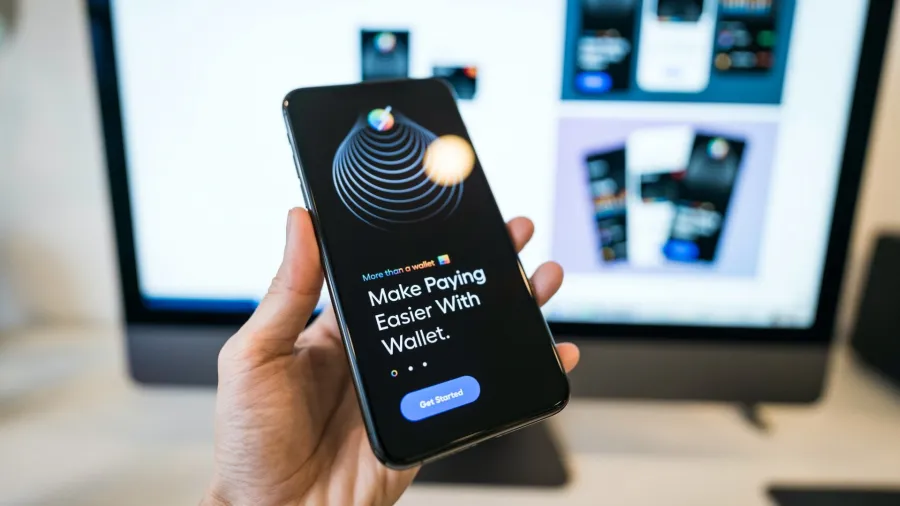
Alternative payments dominate Asia as credit card use dwindles
BNPL may not be the plastic killer everyone touts it to be, but it's attracting underserved customers.
Credit card companies have room to sweat. Despite its current status as the so-called fintech disruptor, buy now, pay later (BNPL) alone is unlikely to overtake credit card use over the next few years. But neither are credit card firms off the hook, with more consumers in the Asia Pacific region expected to ditch the plastic in favour of other alternative credit payment options.
Digital wallets now completely dominate the e-commerce space in APAC, making up 68.5% of the segment’s transaction value in APAC compared to only 12.8% of the share of credit and charge cards, according to data from financial technology service provider FIS’ 2022 edition of the Global Payments Report. Card payments’ share is expected to further decline to 11% by 2025, whilst e-wallets are projected to expand to 72% of the total transaction value in three years.
BNPL currently makes up barely 1% of the total e-commerce transaction value in the region. But the service has the potential to attract consumers seeking to ditch the plastic or have trouble accessing a credit card, said Kanv Pandit, group managing director and head of sales, Asia Pacific, for FIS.
“There has been a latent demand for an alternative to credit cards,” Pandit told Asian Banking & Finance in an interview, adding that there are two primary reasons driving BNPL. “Number one, credit cards address a very narrow segment of the addressable market, like customers who were seeking financing options. The second is customers are seeking flexibility and simplicity.”
Pandit notes that simplicity is a big reason why BNPL has become attractive, as it is easier for consumers to sign up at point of purchase and get their financing needs using this service as compared to signing up for a credit card.
This ease-of-use element extends not just for the consumers, but also for merchants.
“It's enabling sales growth, enabling higher conversion rates for purchase at checkout, and production in otherwise abandoned online shopping carts,” Pandit said.
“Smaller merchants have always traditionally been very cash-heavy, [but] they have had to adopt digital payments. They've seen the use case, the simplicity, and the safety that comes with the use of digital payments. We expect this trend to continue,” Pandit said.
Whilst still occupying a smaller fraction of the market, BNPL transaction value is expected to double its share to 1.8% by 2025, or US$78b of the e-commerce market to become one of the leading alternative payment methods outside of mobile wallets and card payments, FIS’ study found.
Mobile wallets as clear victors
Beyond BNPL and cards, a third party is slated to become the new normal for payments: mobile wallets. E-wallets now dominate both the transaction values of e-commerce and POS payments in Asia, although the latter was heavily driven by China’s e-wallet use. The Red Dragon made up 54% of the total POS transaction value in APAC, driven by QR code payments linked to the dominant mobile wallets, Alipay and WeChat Pay.
Outside of China, mobile wallet use is on the rise but not yet quite as dominant. In Vietnam, Thailand, and Indonesia, for example, cash on delivery continues to be the standard for e-commerce transactions, according to Pandit.
“But preferences are starting to change. There is greater choice and availability of e-wallets and the ease of purchase, that's slowly being realised by customers who start to adopt it,” Pandit said. “Then you have markets like the Philippines, where again, because of the effort and the push led by fintech, like GCash, we're seeing a surge in the use of digital wallets.”
FIS is also seeing very encouraging digital wallet growth in Taiwan, Hong Kong, and Singapore—a trend that's projected to continue to grow through 2025, Pandit added.
“APAC really is a very vibrant market on the adoption of alternative payment methods and digital wallets. Truly, it's been remarkable. And we're forecasting that to continue to be the case for the next two to three years,” he said.
Other alternative forms of payments expected to rise include real-time payments, whose share of transactions of POS payments is poised to grow in the coming years. Thanks to policy and regulator support in Asian markets.
“We've got 13 countries across APAC that either have quality, well-established use, or are studying the growing use, of real-time payment schemes,” Pandit said.
Today, China and India already top the world in terms of daily real-time payment transactions globally. India in particular edged past China in this regard with over 70 million real-time payments made daily, almost double that of China’s 43 million daily real-time payment transactions, according to FIS’ data.
Out with the old, in with the new
But what about the mode of payment that started it all: cash?
“Cash is gradually declining. As a percentage of payment methods, the use of cash continues to go down year on year,” Pandit said, adding that the portion of cash used as a percentage of point of sale transaction value is projected to fall from 16% in 2021 to a mere at 8% by 2025.
“But we're not expecting the absolute death of cash anytime soon. There is that one final element: the fact that digital electronic payments are not going to be always available to everyone in the society. So governments still have to ensure that there is access to financial services. Cash serves that purpose.”
ATM networks will continue to be a relevant channel for years to come even in mature digital payments markets such as Japan, Pandit added.
The future: CBDCs, Cloud
Of emerging possible modes of payment, Pandit expressed excitement for the development of central bank digital currencies (CBDC), which according to him, will impact the trajectory of payments as we know it.
Pandit said that we would likely see CBDC used in use cases for the efficient transfer of money or money movement on a cross border level, especially when it comes down to institutional settlement.
Already, central banks in China, Singapore, and India have taken a leading role in actively investigating the use of, or are actually working with the industry to test pilots on how CBDC can be used in financial transactions.
Regulation of currency moving digitally will also be better under CBDC-use. “ That addresses problems of tax evasion that addresses problems for money laundering, which even today is very difficult for regulators to fix,” Pandit said.
He added that it will help drive down the cost per industry of payments and take away inefficiencies.
Cloud is expected to also play a core role not just in payments but in mobile banking in general, with its potential to reduce costs whilst making digital payments faster and future-proof.
“Banks have operated on legacy cores that have been built over many, many decades, and these are very monolithic systems. They are built on legacy technologies and using legacy languages, which is very difficult to support today, because those skill sets are disappearing,” Pandit said.
“So they can't support emerging trends, technologies, and agility. They can't support, for instance, many of the innovations that we spoke about [like] BNPL and digital wallets. Banks have to put in a lot of effort to get those products out,’ he added.
Seeing that banks are interested in moving to lighter core systems, FIS, for their part, teamed up with Microsoft to offer their FIS Modern Banking Platform on the Microsoft Azure Banking platform, to help banks design, build, and employ new banking products and services that are cloud-native–especially for firms who are still bogged down by legacy systems.





![Cross Domain [Manu + SBR + ABF + ABR + FMCG + HBR + ]](https://cmg-qa.s3.ap-southeast-1.amazonaws.com/s3fs-public/styles/exclusive_featured_article/public/2025-01/earth-3537401_1920_4.jpg.webp?itok=WaRpTJwE)
![Cross Domain [SBR + ABR]](https://cmg-qa.s3.ap-southeast-1.amazonaws.com/s3fs-public/styles/exclusive_featured_article/public/2025-01/pexels-jahoo-867092-2_1.jpg.webp?itok=o7MUL1oO)








 Advertise
Advertise






